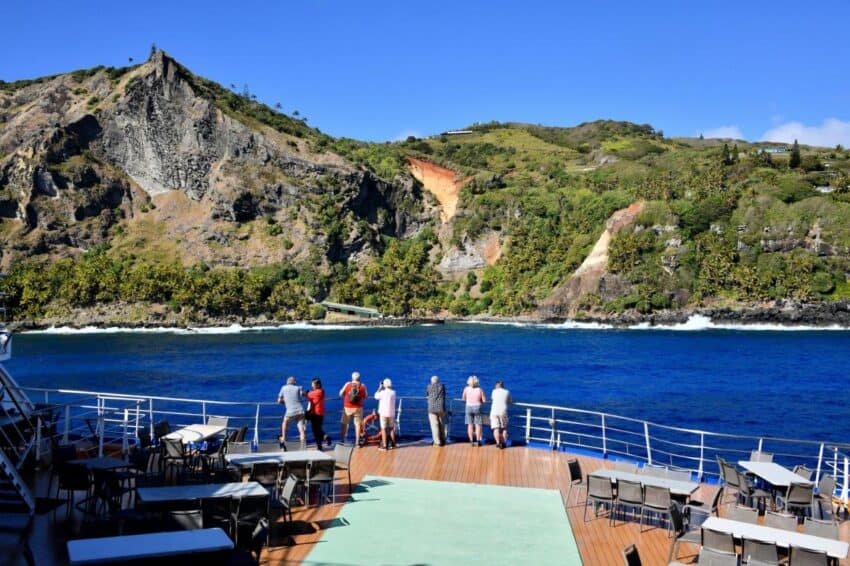
A Worthy Exchange in Tahiti
By Aaron Pribble
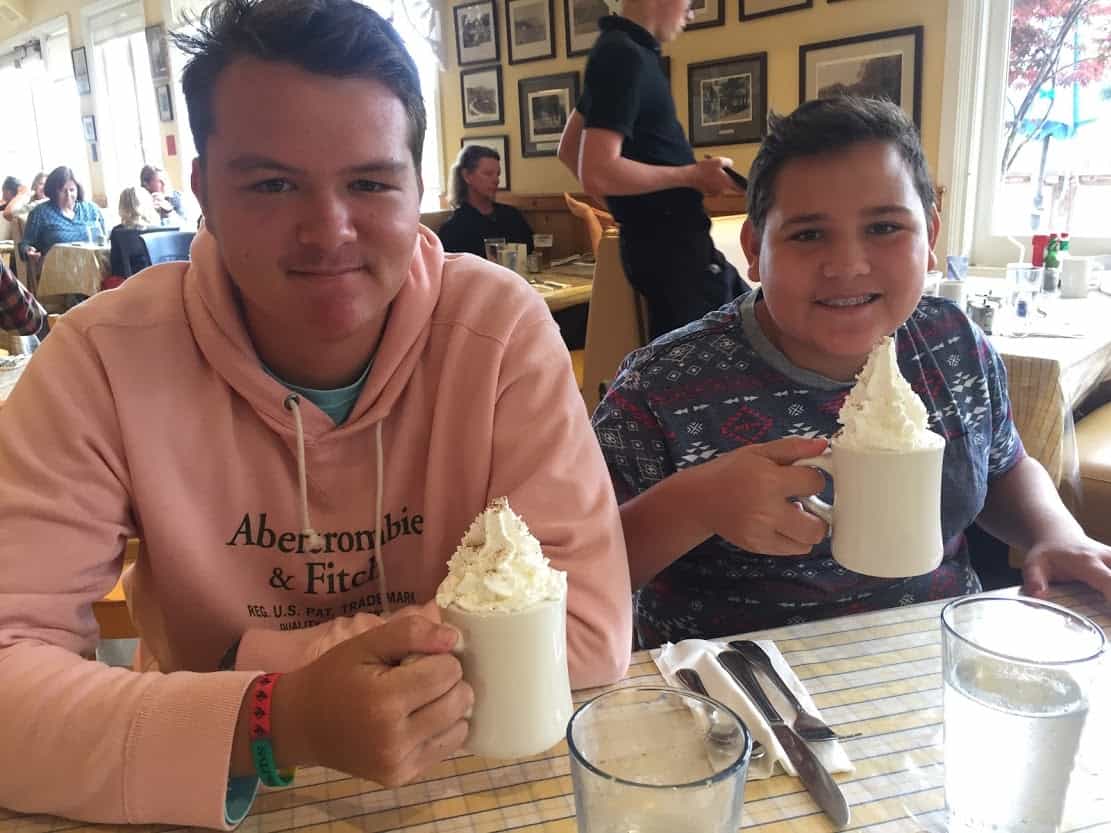
We’re bobbing in the channel just outside the lineup at Teahupo’o.
Maco has deftly maneuvered us through the shallow choral arteries of the Tahitian lagoon, through the maw of the pass, and into the cluster of undulating vessels separated feet, and in some cases inches, from one another to watch the qualifiers of the Tahiti Pro surfing contest.
To our left the world’s thickest wave is breaking not overhead but seemingly beneath our boat, sucking surfers down into a heavy tube that barrels over a steep choral ledge before detonating out of sight.
Tahiti Iti’s South Shore
My wife Michelle and I are here at the end of the road on Tahiti

Iti’s south shore not for the surf contest, however, but to stay with friends of our new Tahitian friends, the result of an unexpected international exchange.
Somehow months earlier we had agreed to host in our tiny Bay Area home two teenagers from French Polynesia.
With no kids of our own but hoping to soon start a family we would be getting a crash course in adolescent parenting.
“I can’t believe the Tahitians are coming,” we would say in wonderment—which quickly became “Holy shit the Tahitians are coming!” as the date of their arrival approached.

17 and 13-Year-Old Guests
Seventeen-year-old Hiva and thirteen-year-old Kaui stayed with us for the better part of two weeks, mountain biking on Mount Tamalpais, learning basketball, practicing guitar, sampling the best of San Francisco’s ramen and pizza, and discovering the joyful mysteries of the s’more, all the while engulfed in a foreign language and culture.
No Jeans
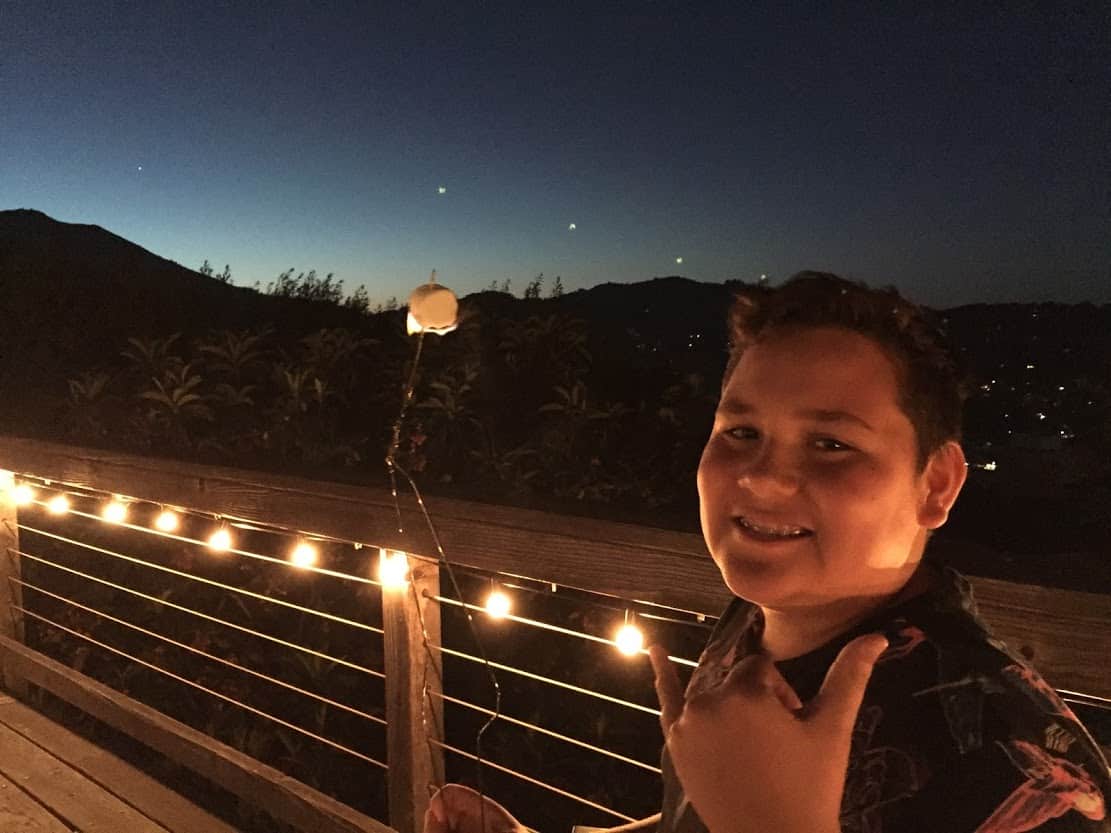
In some ways they stood out, like greeting people with kisses on each cheek or not owning a pair of jeans, but mostly they resembled typical American high schoolers, preferring to sleep in, conspiring for the extra dessert, and obsessed with social media and videogames via their smartphones (Excuse me A-ron, what is your wee-fee password? was their first question not three steps through our front door).

From the lineup at Teahupo’o—colloquially pronounced Cho-pu—Maco ferries us eastward on the lagoon to the pension he runs with his wife Rita. Tucked up against the mountain Reva Teahupo’o is more like a botanical garden than a pension, with fewer than ten solar-powered bungalows arching across fertile manicured grounds.
“Iaorana!” Rita says as we step onto the dock.
Fresh Tuna Sashimi
That night Rita prepares fresh tuna sashimi, pan-fried tuna in garlic, and a casserole of taro gratin.
If it’s possible for one dish to encapsulate the French colonial history in Polynesia, I think, it’s surely taro gratin, taro the Tahitians’ staple fare for hundreds if not thousands of years prepared a la Francaise in a shallow baking dish with breadcrumbs, cheese and plenty of butter.

One should not discuss politics in polite company, they say, but I can’t resist.
My belly is full, the evening breeze is lifting off the lagoon, and geckos begin chirping in staccato as Rita sets down banana crepes topped with chantilly.
“So what do you think about Tahitian independence?” I ask casually between bites.
Rita eyes the French couple sitting across from us at the table, their only other guests, then smiles. I do not yet know Rita is a retired detective for the gendarmes, the national police.
“It’s Complicated”
“It’s complicated,” she begins diplomatically. But she can’t resist. She tells us opinions are mixed with some favoring self-rule while others fear the economic consequences, though many still support a continued association with the French government.

With additional prodding she goes on to mention that foreigners, especially French foreigners, are often referred to as popa’a, which means sunburned in Tahitian, adding for good measure that Teahupo’o is actually pronounced tay-ah-hoo-poh-oh, that Chopu sounds like a combination of “ass” and “head” in Tahitian, whereas Teahupo’o has a sacred meaning associated with the nearby temple or marae.
For the next three days, Michelle and I hike to hidden waterfalls, swim through lava tubes, and explore the rugged coast, often without another human being in sight.
Lacking an internet connection we dig into the novels of Celestine Vaite, a Tahitian expat who grew up speaking French and who upon moving to Australia learned to read and, ultimately, to write in English.

To Faa’a Airport
When it’s time to leave Maco delivers Michelle and I across the lagoon to the beginning of the End of the Road, where we will soon meet up with Mereana—Hiva and Kaui’s mom, air traffic controller at Faa’a International Airport in Papeete and the architect of our exchange.
Three days earlier Mereana greeted us before sunrise at the airport. Maeva, welcome! she called out, bestowing on us tiare leis, or heis as they’re known in Tahitian.
Now she’s shuttling us to the dock in Papeete for the second leg of our journey to catch the ferry to Moorea, the island just west of Tahiti shaped like the W of the Wu-Tang Clan.
The following morning we’re floating in the middle of yet another translucent lagoon. Mereana’s rental house is visible onshore in one direction as are crashing waves at the edge of the reef in the other.

Close by our kayaks rest on the water as we dive to examine the technicolor marine life below. Masks aren’t necessary but in the true popa’a fashion we’re wearing them anyway.
Though to my eye the water is the bluest of light blues, a hue that bleeds into the horizon before sunset, in Tahiti they refer to this color as green. Indeed there is something preternatural about the crystal-clear blue-green lagoons of the South Pacific.
Formed when coral creates a reef around an island, the reef merely the exoskeleton of the living coral and the island but the tip of an underwater volcano, lagoons are a buffer from the wild ocean, an aquatic shield, a source of comfort, protection, and life.
Cool freshwater streams emptying into the lagoon create passes through the reef to the open sea, much like the channel from which we watched the surf at Teahupo’o.
Paddling to the Edge
Michelle and I re-enter our kayaks and paddle to the edge of the reef. The water is calm, no riptide or current. High above us waves rise from the ocean and crash against an invisible surface, washing across the top of the water like a beach filled with sand. The waves are powerful but I feel protected, safely situated inside the loving arms of the lagoon.
As we’re paddling back for lunch and an excursion to the Rotui Juice Factory on Moorea’s interior we hear what sounds like a splash in reverse.
Startled, we jerk our heads to witness a manta ray burst from the water into the air, landing with a belly-flop before skimming out of sight.
On the shore, a crowd of young Tahitians is pointing just ahead of our boats toward two dorsal fins meandering across the surface.
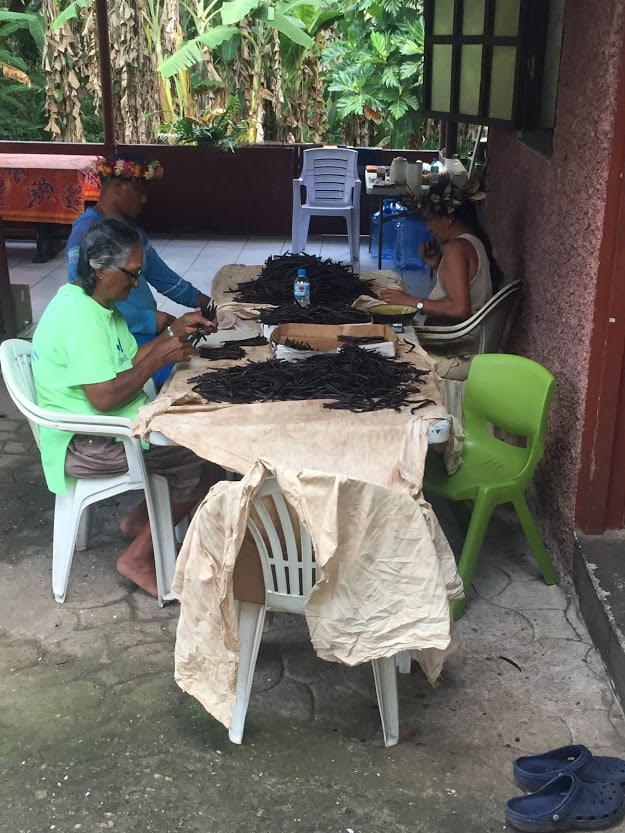
It seems the local sharks are also ready for a meal (a sight that would have sent us panicking were it not for Kaui’s offhanded remark one night in San Francisco that lagoon sharks are harmless).
Lunch at Snack Mahana
On our drive to Snack Mahana, a picturesque lunch-only establishment with an essential version of poisson cru, the Tahitian equivalent to poke, I see wandering dogs by the side of the road and Polynesian tattoo shops around every other turn.
Tattoo, I remember Hiva saying, originates from the Tahitian word tautau, an ancient onomatopoeia brought back to the Western world by Captain James Cook.
I also encounter a strange yet familiar smell. Not the tropical aroma of tiare or plumeria but instead the pervasive redolence of smoke.
I’m reminded of childhood campfires, of Hiva and Kaui eating s’mores on our deck, of California’s flaming forests and the days when the wind shifts and northern embers envelop the Bay Area in a layer of ash.
The smoke, I discover, is a result of smoldering piles of yard waste. I watch it climb in cylindrical plumes from deep in the valley and along the shore.
Familiar Pattern

Over the next few days, we fall into a familiar pattern: mornings on the water, afternoons at a snack for lunch, evenings on the lanai at sunset with a can of Hinano beer.
And just like that, as life slows down and time speeds up, we find ourselves on the island of Raiatea, the second largest in the Societies island group, widely regarded as the cultural heart of eastern Polynesia, and big brother to the island of Taha’a, the Vanilla Island, with which it shares a majestic lagoon.
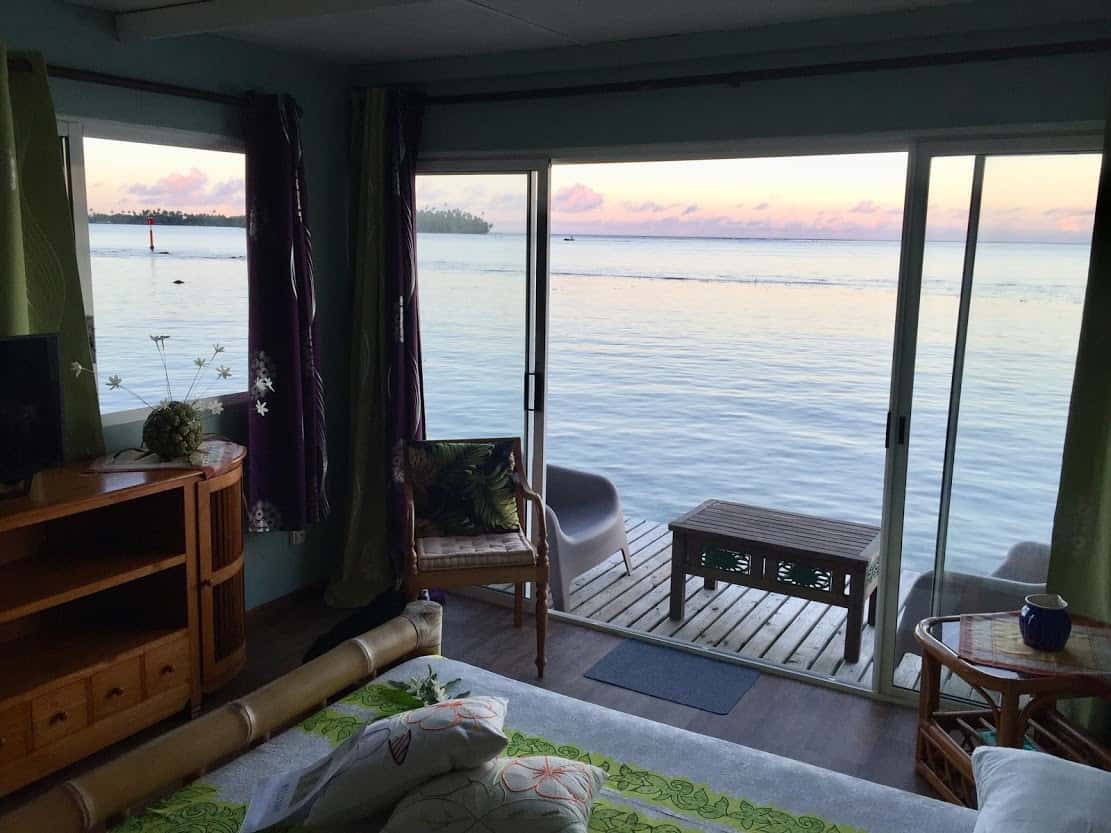
We’re staying with Mereana’s parents, Maeva and Honore, in a rental property behind their house.
It’s technically an overwater bungalow—though less like the recognizable honeymooner suites of international resort fame and more like a charming cottage with two wooden legs which happen to be straddling the sea.
Cute and clean, it’s only recently been made available for home-sharing (one of fewer than a hundred on the island).
Religious Hosts
Maeva and Honore are warm and devoutly religious. Their house is filled with saint candles, angel trinkets and myriad depictions of Jesus, their backyard anchored by an outsize shrine to the Virgin Mary at the foot of a giant pandanus tree.

“Mange bien, eh? Mange bien!” Maeva says often, imploring us to eat well like every grandmother who has ever lived.
But this day Maeva and Honore have left early to participate in Assumption, the Catholic holiday celebrating the assuming of the Virgin Mary’s body into heaven. Michelle and I are also up early with Maeva and Honore’s granddaughter Tea (tay-uh), Hiva and Kaui’s cousin who has taken us to the marae at Taputapuatea.

Named in 2017 a UNESCO World Heritage Site Taputapuatea is the grandest marae in all of Polynesia.
The Fenua
The fenua, the land, is dotted with expansive man-made lava rock formations, one encircling a giant stone slab, another a putative cemetery, a third the remains of an ancient palatial courtyard, all of which are enwreathed by a Wikipedia of tree species and edifying placards printed legibly if not fluently in Tahitian, French and English.
The entire site seems to look out past the lagoon and into the oceanic vastness beyond.
We wander the grounds and Tea tells us Polynesians from far and wide come here to pray at this holiest of sites on this most hallowed of islands.
It is from here that the farthest reaches of Polynesia—Rapa Nui to the east, Hawaii to the north and New Zealand to the west—were settled forming the Polynesian Triangle with Raiatea at its very center; a civilization that, when measured geographically at least, may very well be the greatest on earth.
We set off back down the windy road toward home. In the distance jut the verdant peaks of the valley, and off to the right the green-blue lagoon and its protector the reef. Farther east lies Moorea, the Yellow Lizard, just a short ferry ride from Tahiti and the airport in Papeete.
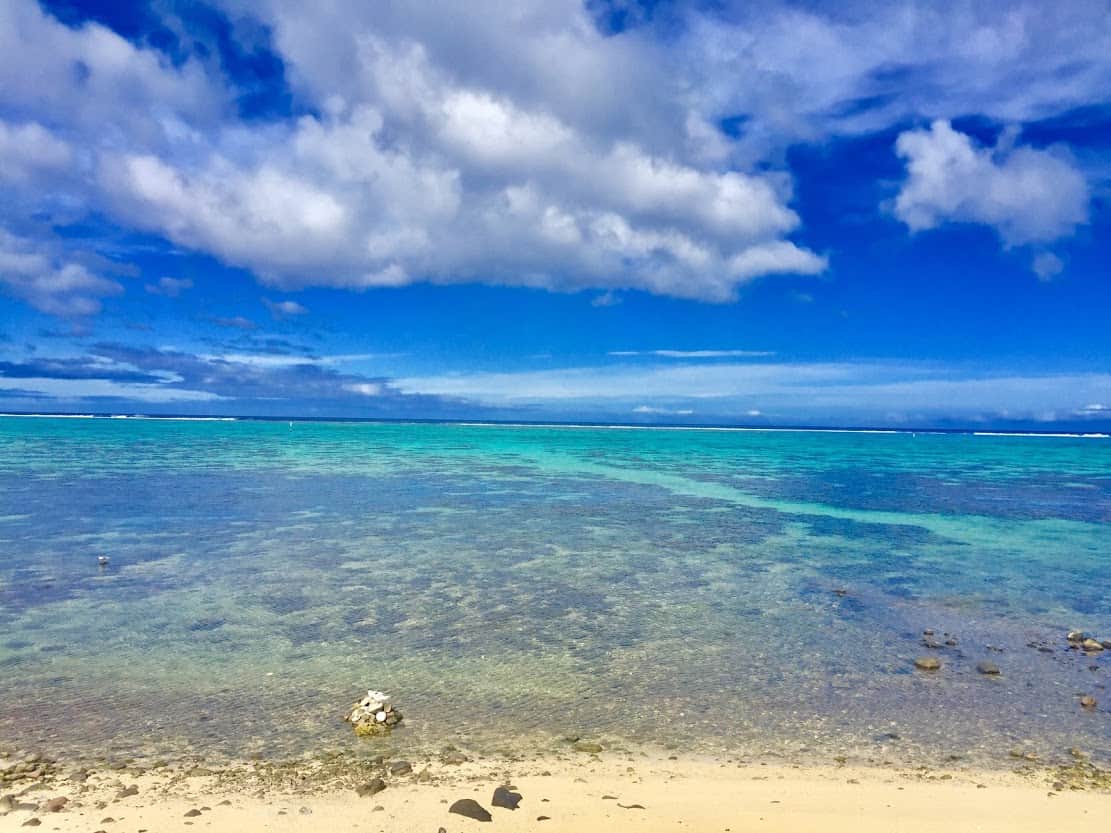
Special Slice
Soon we will leave here and travel a great distance over the ocean. I think of the people who once explored this special slice of the world and of their Tahitian descendants—Mereana, Hiro, Hiva, Kaui, Maeva, Honore, Tea—who we’ve been so lucky to get to know.
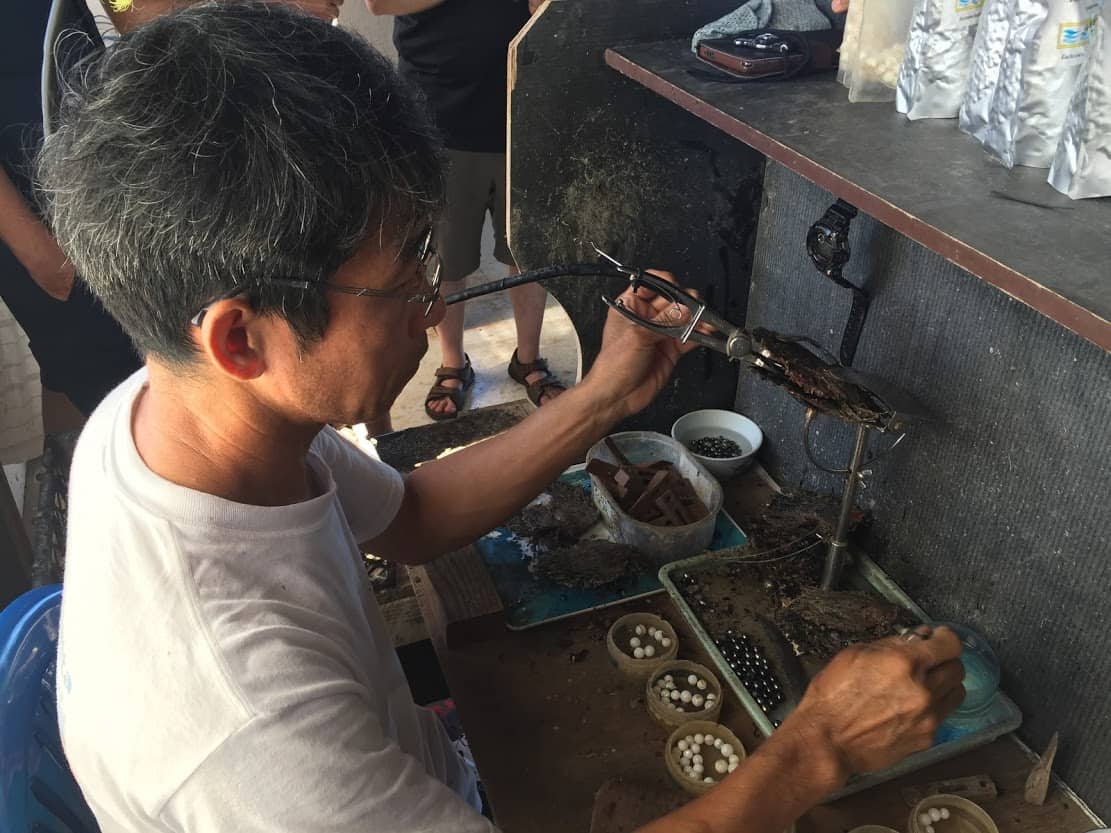
Farther down the road Maeva will give us shell heis—flowers when you come, shells when you go—and she will secretly pull Michelle aside to hand her an envelope of baroque pearls.
Tahitian Tears
Michelle and Maeva have become unusually close these past few days and they’ll both shed unexpected tears as we say goodbye.
We’ll spend one last night with Mereana and the boys, stopping at the famous Papeete roulottes so Kaui can take us to his favorite food truck on the island.
We’ll talk in French and English and Tahitian and laugh in all three, telling stories like when Kaui, because of a misguided translation, thought Michelle and I would be trying to make a baby while he and Hiva were staying with us.
“Tonight?!” he said in teenage horror as we played cards after dinner one evening.
We’ll leave the roulottes of Papeete because school starts in the morning and we’ll say goodbye to the boys, promising to stay in touch.
Tea pulls left around Fa’aroa Bay and the reef opens up.
The Tahitians are coming, I think to myself. I’m so glad that they did.
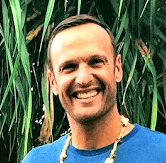
Aaron Pribble is the author of two books, Pitching in the Promised Land (University of Nebraska Press) and Teacherland (Rowman & Littlefield), as well as a number of essays. He lives in Mill Valley, California.
- Saudi Arabia Might Be Your Next Getaway Spot - April 23, 2024
- Mongolia, the Land of Eternal Blue Sky - April 20, 2024
- These 9 U.S. National Parks Require Reservations in 2024 - April 17, 2024



